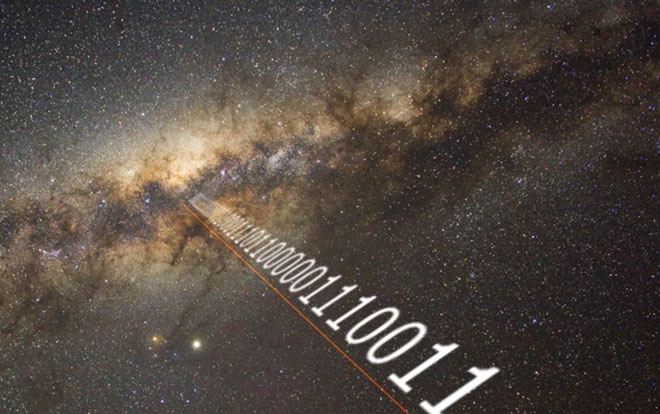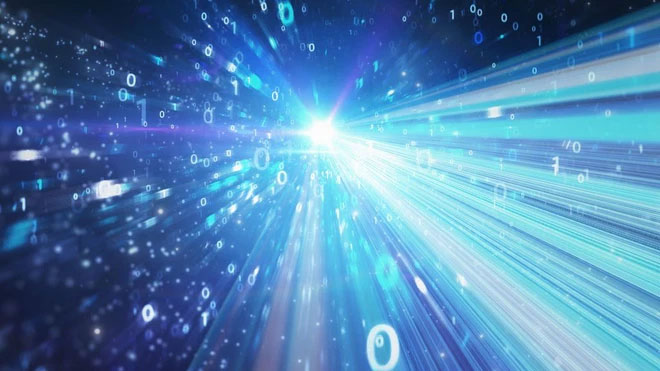As you may know, bit (Binary digit) is the most basic and smallest unit used to represent information in computers and digital communications. Every 8 bits form 1 byte, and 1GB equals 1,073,741,824 bytes. So, if the universe were a gigantic computer, how many bits would it take to “run” it?

The observable universe can contain about 6×10^80 bits of information.
According to calculations by scientists, the observable universe (the universe we can observe) can contain around 6×10^80 – or 600 million trillion trillion trillion trillion trillion trillion trillion (600 million trillion trillion trillion trillion trillion trillion) – bits of information.
About six decades ago, a German-American physicist, Rolf Landauer, proposed a correlation between information and energy, stating that when a digital bit is erased in a computer, it generates a small amount of heat, which is a form of energy.
Albert Einstein created the famous equation E=mc^2, which theorizes that everything with mass has energy, thus it can also be said that every form of matter in nature has energy. Melvin Vopson, a physicist at the University of Portsmouth in the UK, speculates that a relationship may exist between information, energy, and mass.
“Using the principle of relativity between mass-energy-information, I hypothesize that information could be a dominant form of matter in the universe,” Vopson stated. He added that information could even explain dark matter, the mysterious substance that makes up most of the matter in the universe.

A relationship may exist between information, energy, and mass.
Vopson began quantifying the amount of information in a subatomic particle, such as a proton or neutron. He stated that such entities can be fully described by three basic characteristics: mass, charge, and spin (a physical quantity that has the nature of angular momentum and is purely a quantum concept).
Vopson applied the important paper titled “A Mathematical Theory of Communication” by Claude Shannon (an American mathematician, electrical engineer, and cryptographer known as the father of information theory). By examining the maximum efficiency at which information can be transmitted, Shannon introduced the concept of a bit, which can receive and understand 2 values of binary digits 1 or 0 and is used to measure units of information, similar to how distance is measured in feet or meters or temperature in degrees.
Using Shannon’s formulas, Vopson determined that each fundamental particle in the observable universe corresponds to 1.509 bits of encoded information. Next, Vopson utilized the famous Eddington number, which refers to the total number of protons in the observable universe (currently estimated at 10^80). He derived a formula to estimate the total number of all fundamental particles in the universe. He then adjusted his estimates based on the temperature of observable matter (stars, planets, interstellar medium, etc.).

So far, the hypothesis remains just a hypothesis.
From this, Vopson calculated that the total amount of encoded information is equivalent to 6×10^80 bits. This amount of bits corresponds to 7.5×10^59 zettabytes, or 7.5 octodecillion (57 zeros) zettabytes. In comparison, the amount of data generated worldwide in 2020 was 64.2 zettabytes, a figure that could be described as “worlds apart.”
He acknowledges that his assumptions may be incorrect and that perhaps other particles could also store information (Vopson focused on particles such as protons and neutrons but overlooked particles like electrons, neutrinos, and quarks, as, according to Vopson, only protons and neutrons can store information about themselves). However, so far, the hypothesis remains just a hypothesis. There is no way to know whether it is true or not.


















































